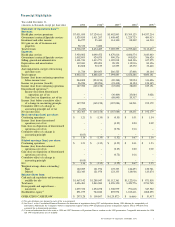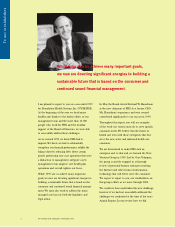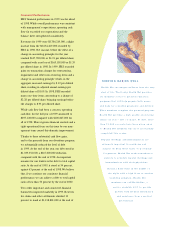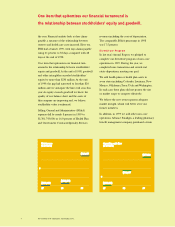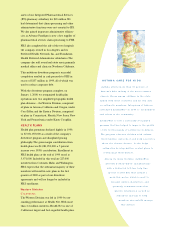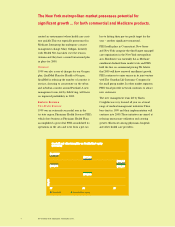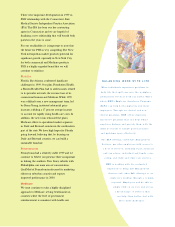Health Net 1999 Annual Report Download - page 9
Download and view the complete annual report
Please find page 9 of the 1999 Health Net annual report below. You can navigate through the pages in the report by either clicking on the pages listed below, or by using the keyword search tool below to find specific information within the annual report.
COMPLEMENTI NG TRADITI ONAL CARE
These days, mo re peo ple than ever are seek-
ing alternative c are services that complement
traditio nal medical care. In fact, last year
alo ne, mo re than 40 percent of Americans
sought some fo rm o f alternative care.
In respo nse to this gro wing trend, PHS Health
Plans developed a co mprehensive alternative
care package called AlternaCare that is no w
offered to all co mmercial emplo yer gro ups
and included in a member’s o verall health
care co verage.
Thro ugh AlternaCare, health plan members in
the New Yo rk metro po litan area c an ac c ess a
large netwo rk o f alternative care practitio n-
ers who specialize in chiro practic care and
acupuncture. In additio n, AlternaCare
offers access to massage therapy services
and thousands of nutritio nal supple-
ments and natural health care pro ducts,
all at a disco unted c o st to members.
By pro viding access to quality,
affo rdable alternative health care
services and pro ducts, PHS mem-
bers have mo re cho ic e and flex-
ibility to fit their o verall
health care needs.
significant opportunity in these market segments.
In fact, Health Net has already sold individual
policies over the Internet and expects to continue
this innovative practice in 2000.
An area of concern in California has been the
financial viability of the more than 200 medical
groups that Health Net, and other health plans,
contract with. Fortunately, we believe much of
this concern is now behind us, with a successful
resolution of issues surrounding MedPartners, one
of the state’s largest medical groups. Health Net’s
leadership role helped pave the way for a solution
that benefits physicians and our members.With
this behind us, we see a relatively stable environ-
ment for 2000, thanks, in part, to rate increases
that reflect the underlying health care cost trends.
Another vital issue in California is the use of
pre-payment mechanisms, sometimes referred to
as capitation.We believe this works well in
California, with its network of integrated medical
groups. Such payment mechanisms help keep
medical decision-making right where it belongs –
in the hands of physicians and other health care
professionals.
For this and other reasons, we will continue to
employ capitation. In fact, near the end of the
year, several of our large medical groups opted to
retain capitation contracts.This puts the number
of California commercial members covered by
contracts that fully capitate all medical expenses,
excluding pharmacy, at about 48 percent, which is
higher than we thought it would be.We are
confident that the groups retaining full capitation
are strong and have demonstrated their capability
in managing both health care services and health
care expenses.
AR IZON A
1999 was a tough year for our Arizona plan,
Intergroup of Arizona. In the wake of 1998’s FPA
Medical Management bankruptcy, our Intergroup
associates worked tirelessly to stabilize the remain-
ing medical groups, while continuing to work
with physicians who had formerly been part of
FPA groups.These substantial changes in 1999



